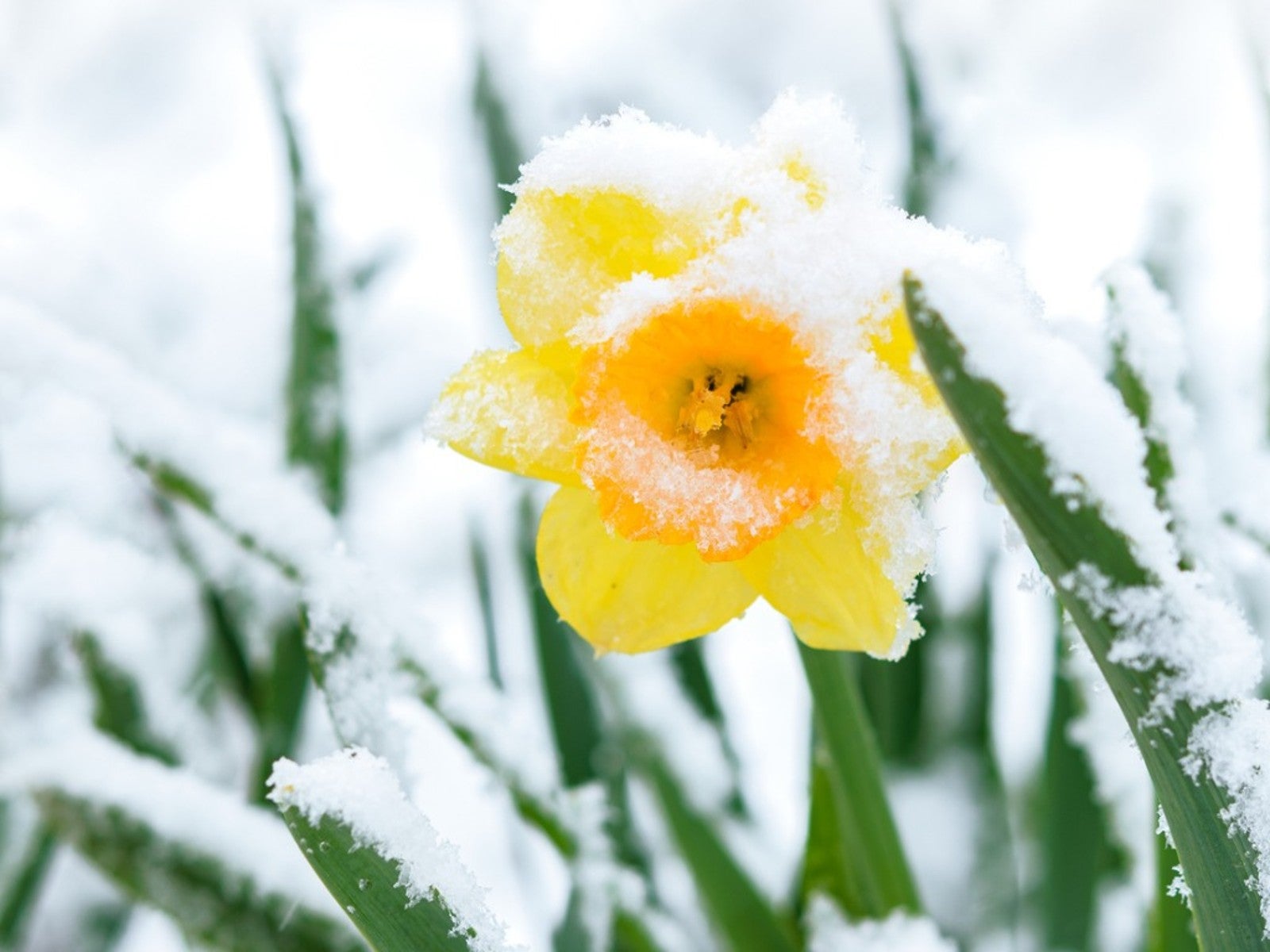Frost Damage On Plants: Early Blooming Flowers And Freezing Temperatures


Experienced gardeners know to wait until after the last spring frost before planting out in the garden. However, no amount of experience can predict random bad weather. What do you do when you’ve planned correctly but a cold snap threatens your seedlings or early blooming flowers?
How to Protect Plants from Late Spring Frost
If you have seeds in the ground when a surprise frost is headed your way, they should be fine. The ground stores and holds onto heat effectively. However, if you have seedlings, they could suffer frost damage if you don’t protect them.
For anything that has already germinated, sprouted, or bloomed, provide some protection. A simple way to do this is to stake a couple layers of plastic or garden fabric over the rows of plants. It’s important to use stakes so the cover doesn’t blow away in the wind. You can also use covers on fruit trees that have already bloomed.
Another option is to cover the plants with any kind of mulch you have on hand. This could be landscaping mulch or straw or leaves. If you’re crafty, you can build a mini greenhouse out of PVC piping and plastic row cover to protect and warm seedlings.
How to Identify Frost Damage on Plants
If you missed the opportunity to properly protect seedlings from a late frost, they could suffer damage. Frost-damaged leaves shrivel and turn brown or even black. They will become limp and eventually drop from the plant.
Frost damage is most likely to occur with your early, cool-season vegetables. You probably won’t get frost on tomato plants and other hot-weather veggies. They shouldn’t be outside until well after the danger of a late frost.
Can Plants Recover From Frost Damage?
Shrubs and trees know how to deal with a late frost. If the first growth is ruined by frost, they can leaf out again. Established perennials can also send out new shoots if necessary.
Gardening tips, videos, info and more delivered right to your inbox!
Sign up for the Gardening Know How newsletter today and receive a free copy of our e-book "How to Grow Delicious Tomatoes".
Your little garden seedlings are much more vulnerable to irreparable cold damage. You will need to re-sow and grow new seedlings if the leaves get damaged. If you sowed seeds that don’t emerge a couple weeks after a late frost, assume they didn’t survive.
If you have fruit trees, a late frost can really do damage to spring blooms, which means a limited harvest later. It only takes a temperature of 25 degrees F (-4 C) or lower to reduce the harvest by as much as 90%. The good news is that the cold snap doesn’t harm the tree itself. It will recover and provide a normal harvest the following year if the weather permits.

Mary Ellen Ellis has been gardening for over 20 years. With degrees in Chemistry and Biology, Mary Ellen's specialties are flowers, native plants, and herbs.
-
 Grow ‘Karl Rosenfield’ Peony Plants For The Ultimate Frilly Border Beauties And Cut Flowers
Grow ‘Karl Rosenfield’ Peony Plants For The Ultimate Frilly Border Beauties And Cut FlowersFor frilly double magenta peony petals infused with a heady fragrance, grow ‘Karl Rosenfield’ peony plants. Here’s how to cultivate the ultimate plushy blooms
By Tonya Barnett
-
 10 Common Composting Problems That Can Spoil Your Garden Gold – Plus Easy Fixes
10 Common Composting Problems That Can Spoil Your Garden Gold – Plus Easy FixesLearn how to troubleshoot common composting issues before they ruin your stash – from bad smells and bugs to materials not breaking down as they should.
By Susan Albert